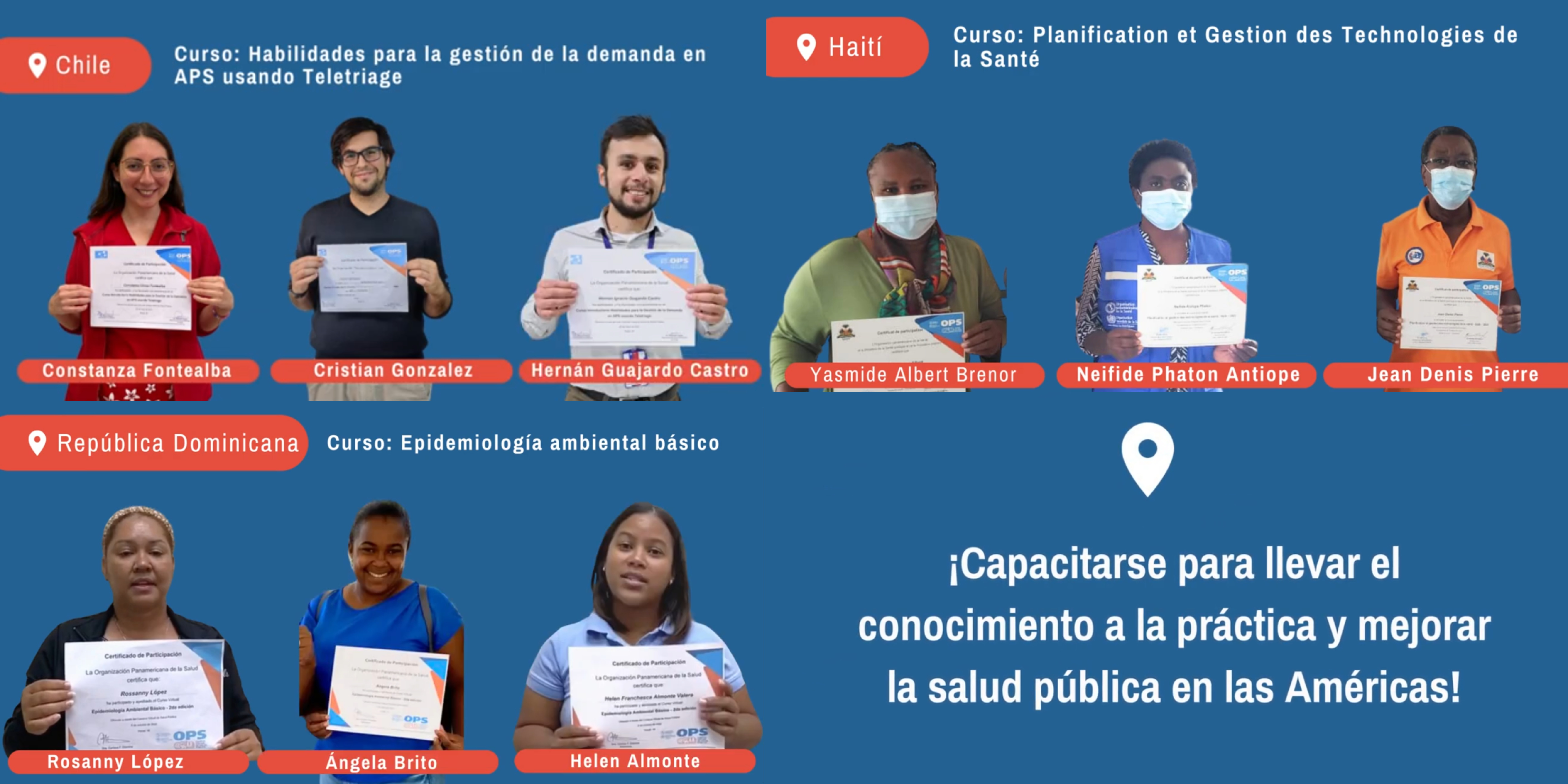
Washington DC, 08 May 2024 (PAHO) - The Virtual Campus for Public Health of the Pan American Health Organization (CVSP/PAHO) plays a fundamental role in training health technicians throughout Latin America and the Caribbean. To understand the experience of these professionals to reach health technicians with training offerings suitable to their characteristics and needs, the Joaquim Venâncio School of Health Polytechnics (EPSJV/Fiocruz) from Brazil, together with the Virtual Campus, has entered into a joint work agreement.
Among the purposes of the work, there is also the search to identify gaps and training possibilities for health technicians in the CVSP and to design future proposals according to the technicians' needs.
As part of the work, a series of seminars have been organized to present the research progress. In the first meeting held on April 16, 2024, research proposals and initial results were presented.
During the opening session, Gabriel Listovsky, head of the Virtual Campus Special Program, emphasized, "It is crucial to know these workers, understand where they work, and what their concerns and training needs are. This meeting is essential for decision-making."
The mission of the CVSP is to contribute to the development of capacities and skills of health workers, supporting the transformation of public health services and practices in the Americas region. "Our challenge is for each worker to perform at their best, keeping in mind our communities. Our principles, aligned with PAHO's values, relate to the perspective of the public good, Permanent Health Education, open and interoperable resources, collaborative management, and sustainability," stated Gabriel Listovsky.
The head of the Virtual Campus Special Program took advantage of the inaugural session of these seminars to thank the Spanish Agency for International Development Cooperation (AECID) for their collaboration in developing this project and highlighted the alliance with Fiocruz (Brazil) and the International Network of Health Technicians Education (RETS).
Anamaría Corbo, director of EPSJV, emphasized the importance of the project giving visibility to health technicians. "We know that technical workers constitute the largest percentage of the health workforce, and since the creation of RETS, we have been talking about the importance of making visible who these workers are, where they are, what they do, and how institutions can strengthen and train these workers. That is where the project fits in," she highlighted.
Human Resources and Health
Gisele Almeida, representing the Human Resources Unit of PAHO, emphasized that their area works for an inclusive and plural space for all health workers. "In the Americas region, inequalities in working and salary conditions persist, and there is a lack of psychosocial support, which affects the mental health of health workers."
Furthermore, she added that "there are no strong policies to retain workers in peripheral or underserved rural areas, and information systems about health workers are practically nonexistent or fragmented." In this sense, Gisele Almeida highlighted the human resources policies approved by the PAHO Executive Board for working conditions towards the 2030 Agenda, which aims to improve this situation in the Americas region.
In line with these policies, the World Health Organization launched the National Health Workforce Accounts (CNPS) in 2017. Ana Paula Cavalcante, also from the Health Human Resources Unit at PAHO, pointed out that CNPS is "a tool that allows countries to progressively improve the availability, quality, and use of health human resources data by monitoring a set of indicators and other health objectives. Planning, management, and effective policy formulation to develop a health workforce suitable to the population's needs and health services require reliable data and information."
Profile and educational trajectories of health technicians
Gabriel Muntaabski, national coordinator of the National Nursing Training Program (Pronafe) of Argentina, who is also part of the project team, highlighted that the initial approaches to the analysis show a growth in enrollments in the CVSP of over 400% for the period analyzed (January 2018 to December 2023). "The highest prevalence is among nursing technicians, followed by community health workers, laboratory technicians, and health administrators," he stated.
